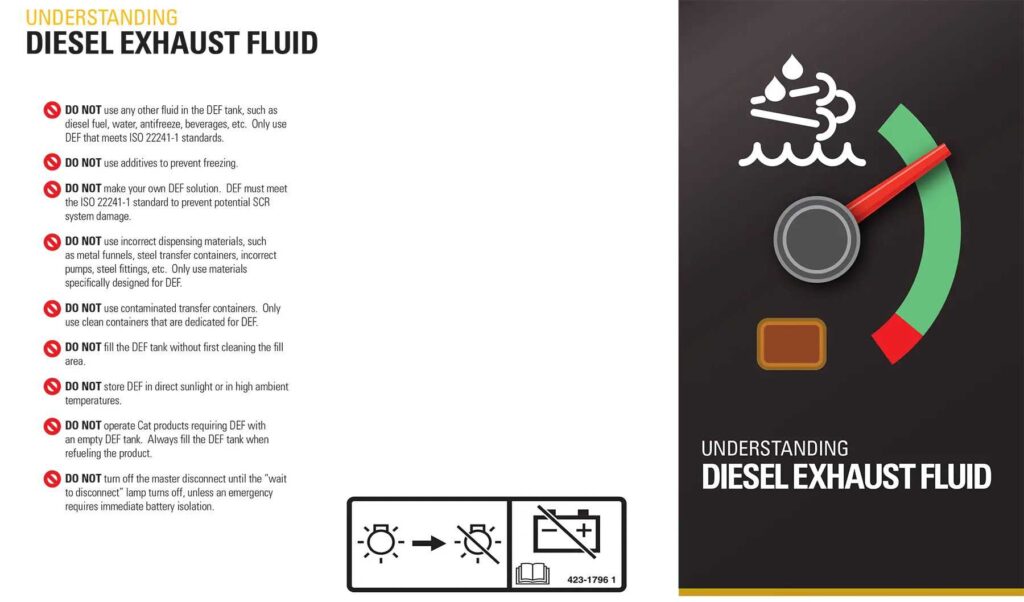Diesel Exhaust Fluid (DEF) has become a crucial component in modern diesel vehicles, enabling manufacturers to meet stringent environmental regulations that aim to reduce harmful emissions.
Dodge began using DEF in 2010 for Ram trucks equipped with the 6.7-liter Cummins engine, making it standard by 2011 to comply with EPA emissions regulations.
This article explores when Dodge began using DEF, the context behind its implementation, and its impact on the brand’s diesel-powered vehicles.
Understanding DEF and Its Purpose
Before delving into Dodge’s adoption of DEF, it’s essential to understand what DEF is and why it’s used. DEF is a non-toxic solution composed of 32.5% urea and 67.5% deionized water.
It is injected into the exhaust stream of diesel engines equipped with Selective Catalytic Reduction (SCR) systems to reduce nitrogen oxide (NOx) emissions, which are harmful pollutants contributing to smog and environmental degradation.

The SCR system converts NOx into harmless nitrogen and water vapor, significantly lowering a vehicle’s environmental footprint.
The push for DEF in diesel vehicles stems from increasingly strict emissions standards, particularly those set by the U.S. Environmental Protection Agency (EPA).
The EPA’s 2010 emissions regulations, enacted under the Clean Air Act, mandated significant reductions in NOx and particulate matter from diesel engines.
This led many manufacturers, including Dodge, to integrate DEF systems into their diesel-powered vehicles to comply with these regulations.
When Did Dodge Start Using DEF?
Dodge, now part of Stellantis, began incorporating DEF systems into its diesel-powered vehicles, specifically the Ram truck lineup, starting with the 2010 model year.
However, the transition was not instantaneous across all models. The full implementation of DEF systems in Dodge Ram trucks (now branded as Ram trucks) became more consistent with the 2011 model year, with complete adoption across most diesel models by 2012.
The primary vehicles affected were the Dodge Ram heavy-duty pickup trucks, specifically the Ram 2500 and 3500, equipped with the 6.7-liter Cummins turbo-diesel engine.
This engine, renowned for its durability and towing capacity, was reengineered to incorporate SCR technology and DEF systems, meeting the EPA’s 2010 mandates.
While some 2010 models began featuring DEF, the complete changeover took time due to manufacturing adjustments and the need to redesign production lines to accommodate the new systems.
According to industry insights, the EPA’s 1 January 2010 deadline for DEF implementation meant that trucks built in 2009 for the 2010 model year might not have included DEF systems, as manufacturers were given some flexibility during the transition.
By 2011, however, Dodge Ram trucks equipped with the 6.7-liter Cummins engine were consistently equipped with DEF systems, and by 2012, this had become standard across the diesel lineup.
The Context of DEF Adoption in Dodge Vehicles
Dodge’s adoption of DEF was part of a broader industry shift driven by the EPA’s 2010 emissions standards. These regulations required diesel engines to reduce NOx emissions by up to 90% compared to previous standards.
This target was nearly impossible to achieve without advanced after-treatment systems, such as SCR. For Dodge, this meant reengineering the Cummins diesel engines used in its Ram trucks to integrate SCR and DEF systems.
Before 2010, Dodge Ram trucks relied on other emissions control technologies, such as Exhaust Gas Recirculation (EGR) and Diesel Particulate Filters (DPFs), to meet earlier EPA standards.
However, these systems alone were insufficient to comply with the stricter 2010 regulations. The addition of DEF and SCR allowed Dodge to maintain the high performance and towing capabilities of its Cummins engines while significantly reducing emissions.
The transition to DEF was not without challenges. Manufacturers like Dodge had to redesign their engine compartments to include DEF tanks, injectors, and associated components, which added complexity and increased production costs.
Additionally, consumers needed to adapt to maintaining DEF levels, as running out of DEF could trigger limp mode, reducing engine performance to encourage refilling.
Impact on Dodge Ram Trucks
The introduction of DEF systems in Dodge Ram trucks brought several benefits and challenges:
- Improved Fuel Economy: DEF-equipped trucks, particularly those with the 6.7-liter Cummins engine, often saw enhanced fuel efficiency. The SCR system allowed for optimized engine tuning, reducing the need for frequent DPF regeneration cycles, which consume fuel. Owners of Ram trucks reported better miles per gallon, helping offset the cost of DEF.
- Reduced Emissions: The use of DEF significantly lowered NOx emissions, aligning Dodge Ram trucks with environmental regulations and contributing to cleaner air. This was particularly important for commercial and fleet operators who needed to comply with state and federal emissions standards.
- Consumer Considerations: DEF systems introduced new maintenance requirements. Owners had to refill DEF tanks regularly, and the fluid could freeze in cold temperatures, requiring proper storage and handling. Repairs to DEF systems could also be costly, though these were relatively rare with appropriate maintenance.
- Performance Maintenance: The 6.7-liter Cummins engine with DEF retained the power and torque that Ram truck owners valued, ensuring that the adoption of emissions technology did not compromise performance. This was critical for Dodge’s reputation as a leader in the heavy-duty truck market.
Dodge’s Legacy and DEF in the Modern Era
Since adopting DEF in 2010–2012, Dodge (and later Ram, as the truck division became a separate brand) has continued to refine its diesel offerings.
The Ram 2500 and 3500 remain popular choices for those requiring robust towing and hauling capabilities, and the Cummins engine, equipped with SCR and DEF systems, has become a cornerstone of their appeal.
The brand’s commitment to balancing performance with environmental responsibility has helped maintain its competitive edge in the diesel truck market.
In recent years, Ram has also explored alternative powertrains, including electrified options, as seen in the 2025 Dodge Charger Daytona, an all-electric muscle car.
However, for its diesel trucks, DEF remains a critical component in meeting emissions standards while delivering the power and reliability that customers expect.
What Year Did DEF Start on Cummins
Cummins began using DEF in 2010 for its diesel engines, such as the 6.7-liter engine in Ram trucks. This was to meet strict EPA rules for cleaner emissions. By 2011, nearly all Cummins engines utilized DEF systems.
What Year Did Dodge Start Using DEF Fluid
Dodge began using DEF fluid in 2010 for Ram trucks with the 6.7-liter Cummins engine. By 2011, it had become standard to follow the EPA’s 2010 emissions rules, which helped reduce harmful exhaust and maintain engine power.
What Year Did Ram Start Using DEF Fluid
Ram began using DEF fluid in 2010 for diesel trucks, such as the Ram 2500 and 3500, equipped with Cummins engines. By 2011, DEF was standard to meet EPA emissions rules and keep the air cleaner.
What Year Did Ram 2500 Start Using DEF
The Ram 2500 started using DEF in 2010 with its 6.7-liter Cummins diesel engine. By 2011, DEF systems were standard to comply with the EPA’s 2010 rules, reducing emissions while maintaining the truck’s strong performance.
Does the 2012 Cummins Have DEF
Yes, 2012 Cummins engines, such as the 6.7-liter engine in Ram trucks, use DEF. By 2011, it had become standard to meet EPA emissions rules. DEF helps reduce harmful exhaust, keeping the engine eco-friendly and powerful.
What Year Did DEF Start on Duramax
Duramax started using DEF in 2011 for diesel engines in GM trucks, like the Chevrolet Silverado and GMC Sierra. This was to meet EPA’s 2010 emissions rules, reducing harmful gases with DEF and SCR systems.
What Year Did Dodge Start Using DPF
Dodge began using a DPF (Diesel Particulate Filter) in 2007 for Ram trucks equipped with the 6.7-liter Cummins engine. It was part of meeting the EPA’s stricter emissions rules to trap soot and reduce diesel exhaust pollution.
What Year Did Ram 3500 Start Using DEF
The Ram 3500 started using DEF in 2010 with its 6.7-liter Cummins diesel engine. By 2011, DEF was standard to follow EPA’s 2010 emissions rules, helping cut emissions while keeping the truck strong.
FAQs
1. What Is DEF Made Of?
DEF is a mix of 32.5% urea and 67.5% water. It’s non-toxic and used in diesel trucks to reduce harmful emissions.
2. What Year Did All This DEF System Stuff Start?
DEF systems were introduced in 2010 for most diesel trucks to meet EPA regulations, reducing emissions through SCR technology.
3. What Happens if You Run Out of DEF?
If you run out of DEF, your truck may enter limp mode, lose power, or fail to start until the DEF is refilled.
4. What Year Did They Start Using DEF on Trucks?
Trucks started using DEF in 2010 to meet the EPA’s emissions rules, with most diesel models adopting it by 2011.
5. Does a 2012 Ram 2500 Have DEF?
Yes, the 2012 Ram 2500, equipped with a 6.7-liter Cummins engine, utilizes DEF to meet EPA emissions regulations and reduce pollution.
Conclusion
Dodge began using DEF in its diesel-powered Ram trucks starting with the 2010 model year, with full implementation across most models by 2011 and standardization by 2012. This transition was driven by the EPA’s 2010 emissions regulations, which mandated significant reductions in NOx emissions. The adoption of DEF and SCR technology enabled Dodge to maintain the performance of its Cummins diesel engines while meeting environmental standards. While the shift required adjustments in manufacturing and consumer maintenance habits, it ultimately enhanced fuel efficiency and reduced emissions, reinforcing Dodge’s position as a leader in the heavy-duty truck market. For Dodge Ram owners and enthusiasts, understanding the role of DEF highlights the brand’s ability to adapt to changing regulations while delivering the power and reliability that define its legacy.
